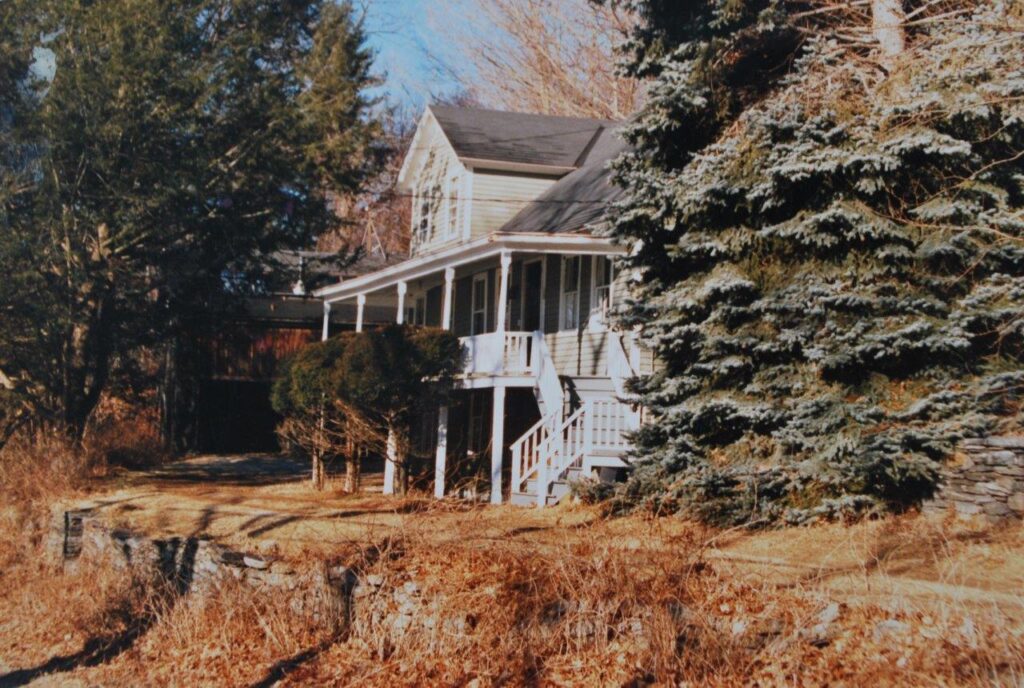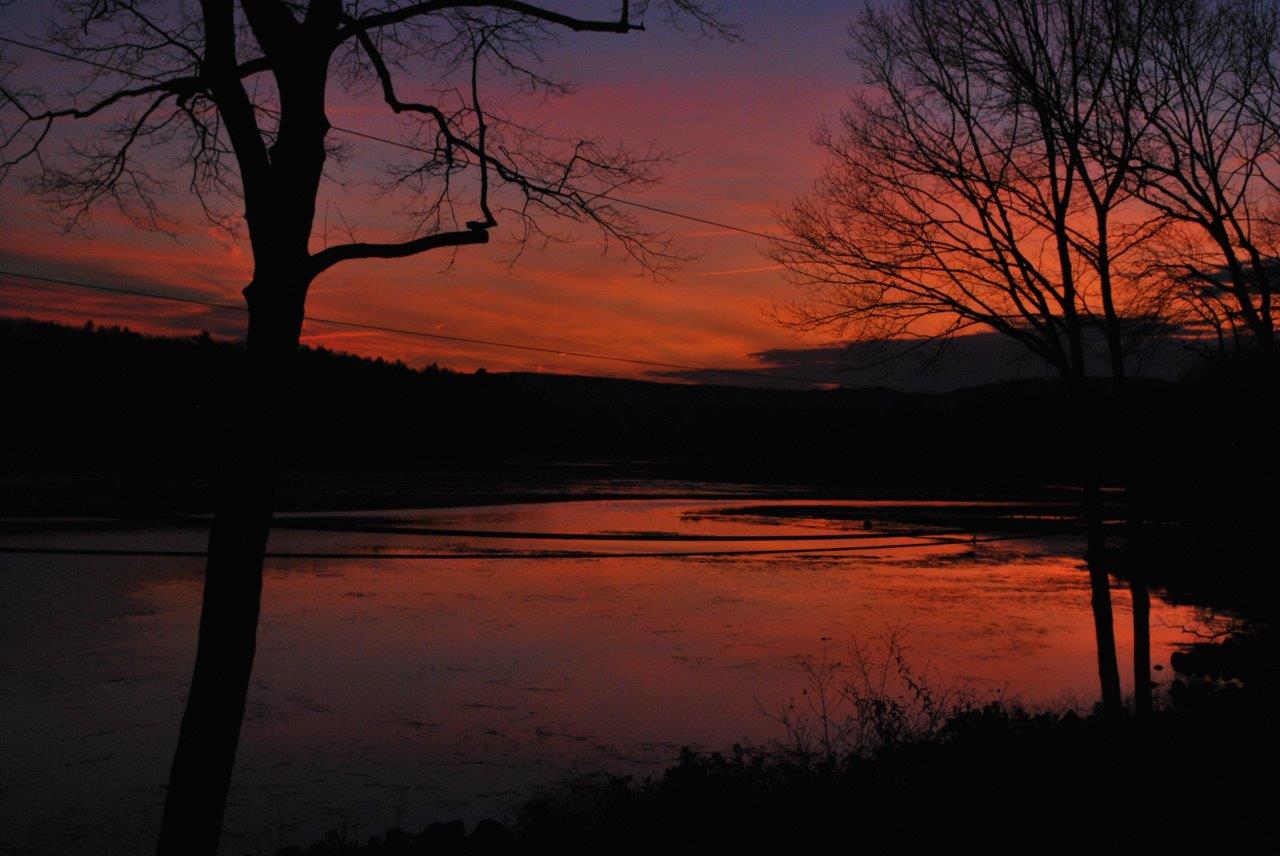This is the second of several in a series of writings by Tim Lovejoy on his arrival, house, and garden in Hadlyme, CT. You can find the first part here.
At the bottom of the hill we turned onto Ferry Road, and then as we came around a corner and over a rise, Whalebone Cove opened out in front of us. Mostly it was frozen, but there were still open channels crowded with busy, flapping ducks, numbers of geese landing, seagulls and a pair of swans, heads held high, gliding among them.
Dazzled by a hundred birds flying up and the golden light spilling towards us across the ice and water, we stopped dead and together gasped, “Oh, My God.”
Eventually pulling ourselves away we moved on, down along the road, to the Hadlyme-Chester Ferry and the river. Only two houses were visible from our side of the cove and none across the way, just woods. The first was an old yellow house with multi-paned horizontal windows that were common to old Connecticut houses redone in the thirties and forties. The other was a newer house with dark-stained clapboarding made to look like the very old houses in places like Deerfield.
The latter was for sale.
Curious, suddenly, about this road and this beautiful cove we got out and snooped around. Neither of us was that interested (less still later back at George’s, when we learned the house was for sale for a million dollars). Driving on over a causeway that cut through the cove, we came to a beautiful old graveyard and discovered two pieces of land for sale next to it, but we couldn’t figure out how to build on them without buying both lots.
Finally, we went on down to the ferry landing where there were a couple of fine old 18th-century houses and a grand old stone house from the turn of the last century called “Highover” on a bluff above the landing. On the hill on the other side of the road loomed Gillette Castle, an ugly but strangely loveable fantasy of a building.
The ferry was closed for the season, the boat gone, and we walked out onto the sloping boat ramp and stood out on the end, looking up and down the river as it curved past us – a honey spot – I thought to myself – all this. Finally, we figured it was late enough for us to go back to George’s. Heading back up the way we had come, we passed the spot where we had stopped before and pulled over again for another look.
Sitting there watching the birds in the late afternoon light, slowly I became aware of something on the other side of the road, the inland side, a clearly very old, gray clapboard house that, going the other direction as we had been before, sat high enough above the road and far enough back, that we couldn’t really have seen it and certainly wouldn’t have noticed it with that golden floor show opposite on the cove.
“Where’d that come from?” I said. And we both leaned forward and peered wide-eyed up through the windshield. The house was quite long and set into the side of a steep hill. The oldest part, the eastern end, was a classic cape built on top of a lower ground floor. The newer part, to the west, was a rather plain three-story wing. Binding the two sections together, facing south across the water, was a long covered porch. With that porch, and the main living rooms upstairs – high enough to be above flood level – the whole thing reminded me of the old river houses along the Delaware River in New Jersey that, growing up, I had thought romantic when we went down there for summer picnics.

“Love those,” I said pointing at the old stone walls going up the hill – retaining walls that formed terraces. The house sat on the first, set back and above the road. A lower wall to the east along the inside of the drive had steps leading up to a sloping lawn and a small kitchen wing. On the other end of the house, a high wall connected the house to a good-sized barn which we hadn’t really noticed before.
Preoccupied by the house, we also hadn’t noticed that there was a sign on the slope below the house. Hand painted and amateurish, it read, “House For Sale By Owner” and gave a phone number. We hadn’t seen it before because it hadn’t actually been there before. As we learned later, the neighbor had come home just before sunset, just before we got there, found the sign blown over and had just put it back up.
“Hey!” I crowed, bopping Christian on the arm. “The damn thing is for sale! Let’s go look.”
This is the second of several in a series of writings by Tim Lovejoy on his arrival, house, and garden in Hadlyme, CT. Lead illustration from Into the Garden by Christian Peltenburg-Brechneff copyright © 2019
Into the Garden, a new volume of 185 illustrations by Christian Peltenburg-Brechneff, with a foreword by Bunny Williams, and essay by Donald Kuspit, will be released in June by G Arts. You can preorder copies of the book here
There will be a lecture, book signing and reception, on June 30th at 3 p.m. at the Florence Griswold Museum in Old Lyme, followed by a sneak preview of the exhibition at 5 p.m. at the Cooley Gallery, 25 Lyme St. There will be an opening for the exhibition at the Cooley Gallery on July 6th, 5-7 p.m.

